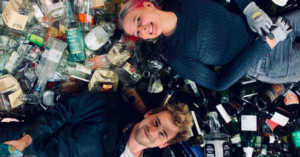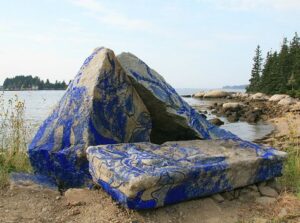As more CO2 enters the ocean, the water’s pH and temperature change in processes called ocean warming and acidification. Both processes pose a risk to marine microbes, as they are unaccustomed to their new, more acidic environment. Several marine species depend on the microbes that dwell in the ocean, and if the change in pH negatively impacts the oceanic microbiome, there would be negative implications for a large number of organisms.
Microbes are essential to the development of many species in the world’s oceans. They are able to activate genes, sculpt the bodies of multicellular organisms, and provide vital life information to juvenile species (Yong 2016). But these abilities may be disrupted if the ocean’s change in pH negatively affects the microbiomes both in the water and living within ocean creatures.
Dr. Elliot Scanes and his colleagues at the University of Technology Sydney evaluated the effects of ocean acidification on the Sydney rock oysters’ (S. glomerata) ability to transfer its microbiome down to its offspring during reproduction. Oysters reproduce via broadcast spawning, a process in which sedentary organisms release all of their eggs and sperm into the surrounding water in hopes that a portion of the gonads will be fertilized (Bondar, 2018). Because these broadcasted embryos are now exposing their microbiomes to warmer, more acidic environments than the microbiomes of previous generations have been accustomed to, the microbes living within these embryos are not well adapted to the new conditions. This poorly equipped microbiome is causing fewer and fewer embryos to develop properly. An oyster’s microbiome is a necessary part of its body, and without it, a juvenile oyster may not be able to develop and function as effectively (Scanes et al. 2023).
Scanes set out to examine whether exposure to ocean warming and acidification during both broadcast spawning and early reproduction would alter an oyster’s microbiome strength.
The lab team acclimated these oysters to the lab tanks and then harvested their eggs and sperm, later fertilizing them (Figure 1.) (Scanes et al. 2023). Half of the oyster embryos were raised in tanks with a normal pH, and the other half were raised in tanks with decreased pH to mimic ocean acidification. The team conditioned both sets of S. glomerata for reproduction, then used eggs and sperm from each set to breed the next generation of oysters. The next generation was divided into four groups: first, the oyster embryos collected in tanks with a normal pH were split into two groups, with one group being raised in another tank with a normal pH and the other being raised in a tank with a low pH that mimics ocean acidification. Then, the oyster embryos collected in tanks with a low pH were also split into two groups, with one group being raised in another tank with a low pH

and the other being raised in a tank with a normal pH.
The embryos produced from these four sets of oysters informed Scanes et al. of the physiological differences that occur between oyster microbiomes that are exposed to ocean acidification at different steps in the reproductive process. The team found significant alteration of the microbiome in the parent oysters exposed to ocean acidification and concluded that when oyster parents were exposed, more oyster embryo microbiomes were prepared for the new conditions, and so the more protected oyster embryos survived (Scanes et al. 2023). This information is of much consequence because it provides a baseline for studying other microbe–sea creature relationships in the future. The marine microbiome plays a critical role in the development and wellbeing of animals like the Hawaiian bobtail squid and the Hydroides elegans, otherwise known as the “squiggly worm,” who depend on them for gene activation and information on safe places to live, respectively (Yong 2016). Now that there is evidence that the changing conditions of ocean water harms microbes, and therefore harms the creatures that depend on them, as well as evidence that exposure to these conditions protects the microbes in future generations, scientists are better informed about how to protect marine species moving forward.
Literature Cited
Bondar C. Wild Moms. 2018.
Messina Z et al. Partial Pressure of Carbon Dioxide. National Library of Medicine. 2022.
Scanes E et al. Transgenerational transfer of the microbiome is altered by ocean acidification in oyster larvae. Aquaculture. 2023.
Yong E. Body Builders. I Contain Multitudes: The Microbes Within Us and a Grander View of Life. 2016. 49-59.










